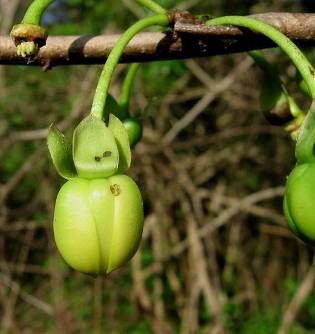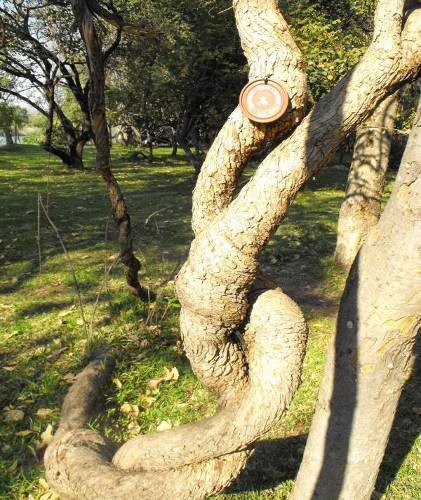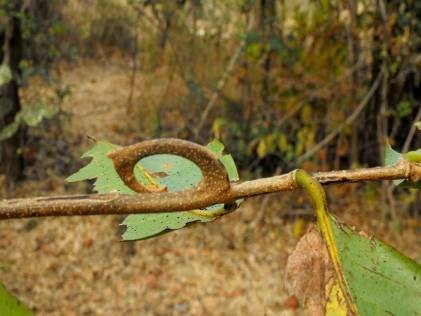By JP Felu

Family: Annonaceae (The Custard Apple Family)
Botanical name: Artabotrys brachypetalus
Common name: Purple Hook-berry, Shona: Mukosvo, Ndebele: Umdzidzi
The Annonnaceae family is represented in Zimbabwe by the following: Cleistochlamys kirkii; Friesodielsia obovata; Hexalobus monopetalus; Artabotrys brachypetalus, and Xylopia aethiopica.
In Southern Africa there are some 20 species, mainly tropical. If you look at the list of names above, all those found in Zimbabwe come from lower, hotter areas such as Kariba, the Honde Valley, Sentinel, Kariba and at Hippo Pools on the Mazowe River.
Depending on its location, the tree can be a multi-stemmed, low spreading tree like most of the specimens found in the Matopos, or in hotter wetter areas it becomes a large liana like those in the campground at Hippo Pools. The bark varies from a smooth grey to a rough texture in the older, bigger specimens.

The tree climbs by mean of distinctive curling flower stalks (peduncles) shown above. The leaves are ovate to elliptic-oblong, 4.5 cm to 11 cm long and up to 7cm wide. They are bluish green to glossy bright green, sometimes finely hairy above, always dull and often velvety below, lateral veins looping round and joining up almost at the margin; apex broadly tapering to almost rounded, often sharp-tipped; the base is broadly tapering to rounded; the margin is entire and the petiole short.

The flowers are about 2cm in diameter. The sepals are hairy, bending well back, and the petals are yellowish, rather cup-shaped. The fruits form a cluster of up to 6 carpels, long, elliptic and purplish black when ripe. The fruits mature from December to March and are edible.
As usual there are some medicinal uses of the plant, particularly in Malawi. An infusion of roots is taken to treat infertility in men. An infusion of the roots is also made for convulsions and used to wash the body as well as taken orally.

